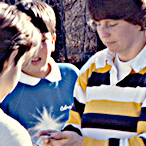
Stories are a powerful force that can join and separate people. Think of the major stories that underlie religions and spirituality, (Christianity – Judaism – Hinduism – Indigenous Spirituality) political orientations, (democracy – communism), economics (Capitalism – Socialism – Green) sense of place Natural Resources vs. Natural Relations.
We each have stories that include values, faith, programs, rituals and ways of being human that are handed down from our ancestors. The Center’s philosophy focuses on integrating these stories, so together, we can help discover OUR common story, design rituals and ways of being human together that respect each other and create a shared sense of community.
Helping OUR common rite of passage story emerge will lead to practices, protocols, rituals and ways of being together that nurture life and can be in service to our selves, our congregations, our community, our schools and culture fostering connection and balance to nature and our sacred Earth. The story we co-design for raising our children through rites of passage can help regenerate a sense of community that fosters civic engagement, healing and social justice.
When professionals and citizens, youth and adults join together in learning the language of initiation and rites of passage and participate in experiential encounters with the initiatory process they increase their understanding of youth and community development through rites of passage. Then they can collectively use this common language and shared techniques to integrate many different approaches, including, but not limited to; developmental assets, character education, asset-based community development, social development model of youth development, academic and social-emotional learning, resiliency, Communities that Care, Charter for Compassionate.
To understand some of the central youth development and educational approaches on how the rite of passage story unfolds in practice, click below:
The Collaborative for Academic, Social, and Emotional Learning is the central organization for advancing these methods. One of the Co-founders, Roger Weissberg and I were working together in the ‘80’s on designs that fostered the same outcomes in children. As stated on their web site:
“Social and emotional learning (SEL) is the process through which children and adults acquire and effectively apply the knowledge, attitudes, and skills necessary to understand and manage emotions, set and achieve positive goals, feel and show empathy for others, establish and maintain positive relationships, and make responsible decisions.
SEL programming is based on the understanding that the best learning emerges in the context of supportive relationships that make learning challenging, engaging, and meaningful.
Social and emotional skills are critical to being a good student, citizen, and worker. Many risky behaviors (e.g., drug use, violence, bullying, and dropping out) can be prevented or reduced when multiyear, integrated efforts are used to develop students' social and emotional skills. This is best done through effective classroom instruction, student engagement in positive activities in and out of the classroom, and broad parent and community involvement in program planning, implementation, and evaluation.
Effective SEL programming begins in preschool and continues through high school.”
You could replace SEL with rites of passage – ROPE® or other youth & community development through rites of passage design strategies. The methods may be very similar, but central principles and design strategies that bring the rite of passage story to life are very different.
One of the central design strategies in rites of passage serves to strengthen and deepen the parent – child – school and community connection during a public “Ceremony of Commencement,” which marks the beginning of the end of childhood for the child, within their family and community. In this powerful community sanctioned experience, convened and hosted by school, community and parent leadership members the framework and common language of rites of passage are introduced. Expectations for roles and responsibilities are conveyed to both the child and parent within the safe container of other community members, especially high school students who have been this down the path just a few years before. All “programs” and even subsequent intervention, therapy and treatment are framed within an ongoing process of initiation and periodically marked by public rite of passage ceremonies. It puts into practice design strategies integrated within a common language and experiences to achieve the desired outcomes of academic, social-emotional learning, education & learning, along with youth development and allied areas of traditional caring services.
For further information on this theory and supporting resources, please click HERE to download “What We Believe”.

The “circle sit” is a difficult group challenge. Everyone must communicate clearly and understand how they are going to all safely sit on the lap of the person behind them.
It demands precision, trust and cooperation. It fuels an individual’s belief in the importance of community and in the ability to accomplish great things. This is the hallmark of the Rite of Passage Experience©.
Here are 565 students, teachers and parents involved in a community Rite Of Passage Experience© celebrating their town’s 350’s birthday with the Connecticut Circle Sit record.